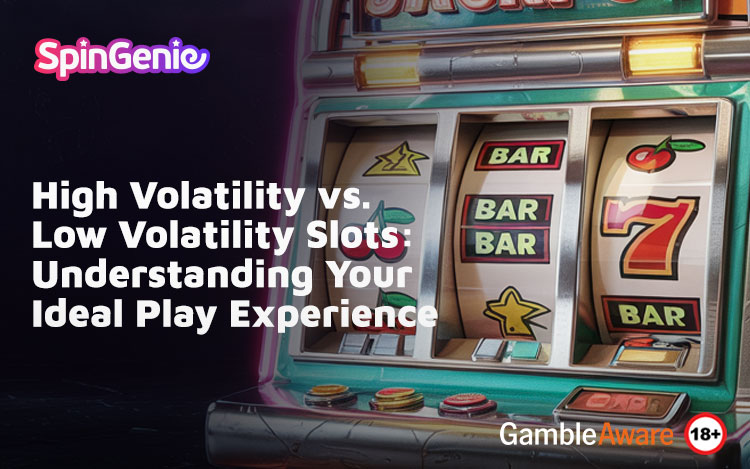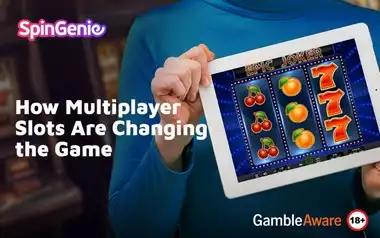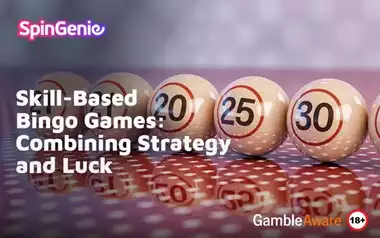When you play online slots, one of the most important considerations is a game's volatility—a characteristic that determines how often and how much a slot pays out. This fundamental aspect of slot design creates distinctly different gaming experiences that appeal to various player preferences and bankroll strategies. Understanding where a slot falls on the volatility spectrum helps you select games that align with your personal playing style and financial boundaries.
Volatility, sometimes called variance, refers to the risk level inherent in a slot's payout structure. High volatility games offer the potential for massive payouts but with long dry spells between wins, while low volatility slots provide more frequent but smaller rewards. Between these extremes exist medium volatility games that blend characteristics of both. Each type offers unique advantages depending on what kind of experience you seek from your slot play.
High Volatility Slots
High volatility slots cater to players who enjoy intense gaming sessions with the potential for life-changing wins. Games like Book of Dead and Dead or Alive 2 exemplify this category, where bonus features may take hundreds of spins to trigger but can deliver payouts exceeding 10,000 times your bet. These slots create an adrenaline-fueled experience where every spin carries the possibility of a massive payout.
The mentality behind high volatility play appeals to risk-tolerant players who derive entertainment from the anticipation of big wins. The extended periods between payouts create tension that makes eventual wins feel more rewarding. However, this style requires substantial bankrolls and emotional resilience to withstand potentially lengthy losing streaks. Players should approach high volatility games with the understanding that they're paying for entertainment that includes the possibility of substantial rewards.
Low Volatility Slots: Steady Entertainment
On the opposite end of the spectrum, low volatility slots like Starburst and Blood Suckers prioritize consistent entertainment over massive payouts. These games pay out smaller amounts more frequently, helping to extend play sessions and maintain steady bankroll levels. While individual wins may seem modest, their regularity creates a more relaxed gaming experience with fewer dramatic swings in fortune.
Low volatility games particularly suit players who:
- Have smaller bankrolls
- Prefer longer playing sessions
- Enjoy frequent small wins over rare large payouts
- Use slots primarily for relaxation rather than adrenaline
The reliable rhythm of low volatility slots makes them excellent choices for casual players or those choosing the best slot games for their first online casino experiences. Their predictable nature helps newcomers learn slot mechanics without the stress of extended dry spells.
Medium Volatility: The Balanced Approach
Between these extremes lies the versatile category of medium volatility slots. Games like Gonzo's Quest and Jammin' Jars strike a careful balance, offering a mix of moderate payouts at reasonable intervals with occasional larger wins. This middle ground provides enough joy to keep sessions engaging while minimizing the bankroll stress associated with high volatility play.
Medium volatility games often represent the ideal compromise for players who:
- Want some big win potential without extreme variance
- Have moderate bankroll sizes
- Enjoy both base game wins and bonus features
- Seek a balanced entertainment experience
This category has grown increasingly popular as developers create games that appeal to the broadest player base. The moderate risk/reward profile makes medium volatility slots excellent choices for regular play sessions where you want reasonable winning opportunities without exhausting your bankroll too quickly.
Volatility's Relationship with RTP
While volatility describes how slot payouts are distributed, Return to Player (RTP) percentage indicates how much money a game returns to players over time. These two metrics operate independently—a high volatility slot can have the same RTP as a low volatility game. The difference lies in how that return is delivered: either through rare large payouts or frequent small ones.
Understanding this distinction helps prevent common misconceptions. Some players mistakenly believe high volatility games are "tight" because they experience long losing streaks, when in reality the game may simply be concentrating its RTP into fewer, larger payouts. Similarly, low volatility games aren't necessarily "looser"—they're just distributing their RTP more evenly across more spins.
Choosing Based on Your Play Style
Selecting between high and low volatility slots ultimately depends on your personal preferences and playing circumstances. Ask yourself these key questions:
- What's my primary goal?
- Entertainment and relaxation → Lean toward low/medium volatility
- Big win potential → Consider high volatility
- How do I handle losing streaks?
- Patient with extended dry spells → High volatility may suit you
- Prefer regular reinforcement → Low volatility better matches your temperament
- What's my bankroll size?
- Larger bankrolls can withstand high volatility variance
- Smaller bankrolls benefit from low volatility's consistency
There's no universally "better" option—only what works best for your individual situation. Many players enjoy mixing both types across different sessions to experience the full range of what slots offer.
Bankroll Strategies for Different Volatility Levels
Your money management approach should adapt to a slot's volatility:
High Volatility Play
- Smaller bet sizes relative to bankroll (0.25-0.5% per spin)
- Larger overall session bankroll (500+ bets)
- Prepare for extended play sessions (2+ hours)
- Set strict loss limits to prevent chasing
Low Volatility Play
- Moderate bet sizes (1-2% per spin)
- Standard bankroll (100-200 bets)
- Shorter sessions often more satisfying
- Can set win goals since payouts are predictable
Medium Volatility Play
- Balanced bet sizes (0.5-1% per spin)
- Moderate bankroll (200-300 bets)
- Flexible session lengths
- Combination of win goals and loss limits
These guidelines help ensure you get the most enjoyment from each volatility type while protecting your bankroll from unnecessary risk.
The Role of Bonus Features
Volatility significantly impacts how bonus features function within a game. High volatility slots typically have:
- Fewer but more valuable bonus triggers
- Free spin rounds with higher win potential
- Features that account for most of the game's RTP
Low volatility games tend to feature:
- More frequent but less lucrative bonuses
- Smaller multipliers during free spins
- More balanced distribution between base game and feature payouts
When evaluating a slot, consider how its bonus features contribute to the overall volatility profile. Some games allow you to purchase bonus rounds—an option that makes more financial sense in high volatility games where features are harder to trigger naturally.
Myths About Slot Volatility
Several misconceptions persist about volatility:
Myth: "High volatility slots pay out less overall."
Truth: They simply concentrate payouts into fewer, larger wins.
Myth: "Low volatility games can't produce big wins."
Truth: They can, just less frequently than high volatility counterparts.
Myth: "Volatility changes based on recent payouts."
Truth: Each spin is independent—volatility is a fixed game characteristic.
Understanding these truths helps you make informed decisions when selecting slots and setting realistic expectations for your sessions.
Finding Volatility Information
Game developers don't always explicitly state volatility levels, but you can determine them through:
- Paytable analysis (frequency of high-paying symbols)
- Bonus feature trigger frequencies
- Player community feedback and reviews
- Demo play experience
Many review sites and casino game libraries now include volatility ratings to help players make informed choices. Spending time researching before playing pays dividends in finding games that match your preferences.
The Evolution of Volatility in Slot Design
Modern slot developers have become increasingly sophisticated in their volatility designs. Some newer games feature:
- Adjustable volatility settings
- Hybrid models that shift volatility during bonus rounds
- Progressive volatility that changes based on gameplay
- Player-selected risk levels for bonus features
These innovations allow for more personalized gaming experiences where players can tailor volatility to their current mood or bankroll situation. As slots continue evolving, understanding volatility remains essential for maximizing enjoyment. Choose your risk level and explore top slots at Spin Genie UK. Play now for a tailored experience.










